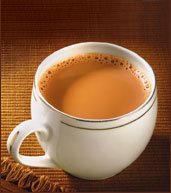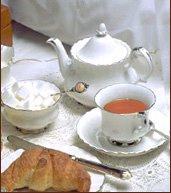As I have said in my earlier blog entry, the process of tea tasting and blending is an art. This is how it takes place.
The tea to be tasted is placed in boiling water...normally double the amount that we add to our home brew. The temperature of the water depends upon the sensitivities of the leaves. The temperatures could be anywhere from 170 to 212 degrees centigrade.
The tea is steeped for about 3 to 4 minutes in a cup covered with a lid. The lid is taken off and the brew is ready for tasting. Here both taste and aroma matters hence the smell enhances the taste perception.
The taster begins with a big slurp which lowers the temperature and the brew covers the sensitive taste buds. On the buds some oxygen is pumped in to capture more aroma. Then the brew is ejected in a waste cup and the taster then moves to the next.
Before moving to the next all the attributes are noted down. This is a complex process and only expert tea tasters are able to judge the leaf accurately.
Saturday, February 1, 2014
Tea Tasting an Art
Tea tasting is an important process in selecting and blending the finest leaves. The sensory apparatus plays an important role in tasting and discovering the right leaves. On the contemporary times this has come to a level of art. The tasting is done by professional and talented people usually from old house involved in the trade of blending the leaves and selling them in the market.
Albeit the tea leaves are derived from the same plant Camellia Sinensis the differing climatic conditions, soil, topography and way of cultivation results in the leaves acquiring properties that are vastly different whence compared with leaf grown in other regions.
The taste buds play the most important role. The nose and the smelling power is as useful is selecting the aroma. Besides the flavoring characteristics and aroma the color of the leaves, size and the type is also taken into consideration. The process involves liquid teas which are tasted in a row one by one.
After the tasting process over the leaves are carefully mixed to form a blend. The blend subscribes to taste, aroma and cost. Hence the companies try to optimize on cost and flavor depending upon the targeted audience.
Subscribe to:
Posts (Atom)




